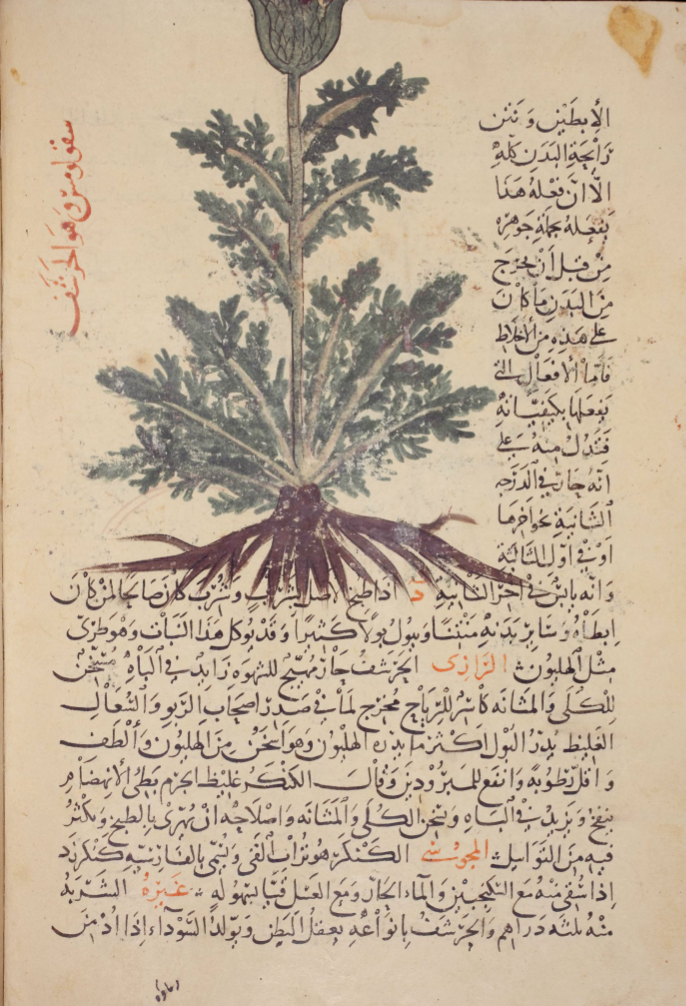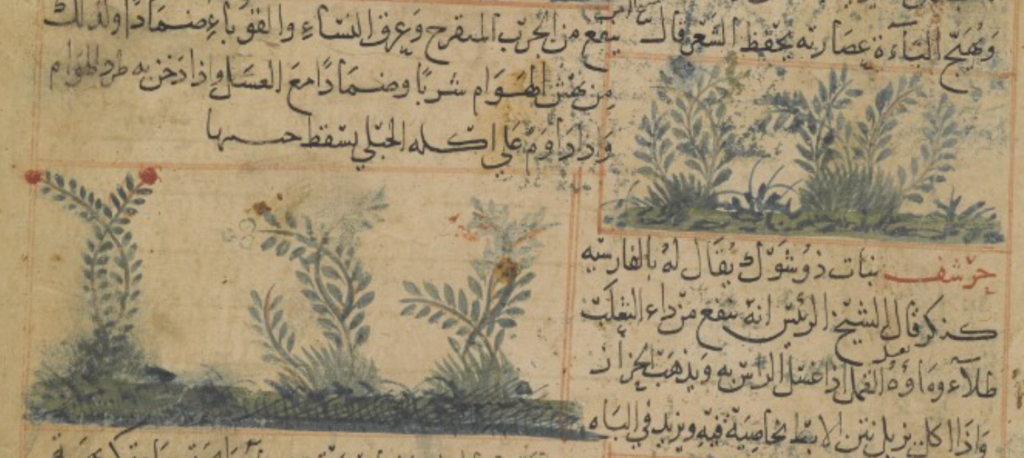The modern globe artichoke (Cynara scolymus) is a member of the thistle family and is a cultivated offspring of the wild cardoon (Cynara cardunculus) . The development of the artichoke is still shrouded in mystery, with both North Africa and Sicily being possible birth places. In Antiquity only cardoon was known, and the Roman natural historian Pliny claimed it was preserved in honey-vinegar with silphium and cumin. There is no evidence that the artichoke was already cultivated then.
In Modern Arabic, the artichoke is known as ardī shawkī (أرضي شوكي) or khurshuf (خرشف); only the latter was used in pre-modern times, with variant spellings kharshaf, khurshūf and ḥarshaf. However, these terms denoted all varieties of artichoke and cardoon. According to the scholar Abū Ḥanīfa al-Dinawari (d. 895), khurshuf resembled field mustard. Additionally, the artichoke/cardoon was also known as kanjar (also kangar) and ʿakkūb and, in al-Andalus (Muslim Spain), qannāriya (a borrowing from the Greek κυνάρα). Some scholars, like Ibn Sīnā (Avicenna), considered ḥarshaf a kind of kankar. The latter is related to the name of the gum resin of the artichoke, kankarzad (from the Persian kangar-zhad).
The artichoke (and/or the cardoon) was probably introduced into European cuisines by the Arabs, whose word for the vegetable resulted in the Italian carciofo, Spanish alcachofa and Portuguese alcachofra.
Today, the word ʿakkūb — a borrowing from Syriac — no longer refers to the artichoke or cardoon, but to another thistle plant, Gundelia (tournefortii), which has a similar taste to the artichoke and is native to the Levant, where it grows in rocky soil. It is collected from the wild in early spring, and is particularly associated today with Palestinian cuisine; it is cooked in a variety of ways, with meat, tomatoes, and onions and olive oil.
The artichoke was used only very rarely in medieval Arab cuisine; the oldest recipe goes back to the earliest Abbasid tradition, in a yoghurt dish known as jājaq (جاجق), a (vegetarian) yoghurt dish. Interestingly enough, a later Egyptian collection includes three variants of this recipe but none of them calls for artichoke. The only other recipes are found in 13th-century Andalusian cookery books, with four in The Exile’s Cookbook, one with meat and three without. One of them fries them in olive oil, very similar to the preparation of the Gundelia described above. In another recipe from the book, cardoon flowers are recommended for curdling milk to make a honeyed curd, which was eaten with fresh figs.
Medicinally, artichokes (or cardoons) were said to stimulate sexual desire and serve as a diuretic and laxative. When used externally in a compress, the vegetable is allegedly useful against alopecia, while washing one’s hair with its water removes lice! expels phlegm


